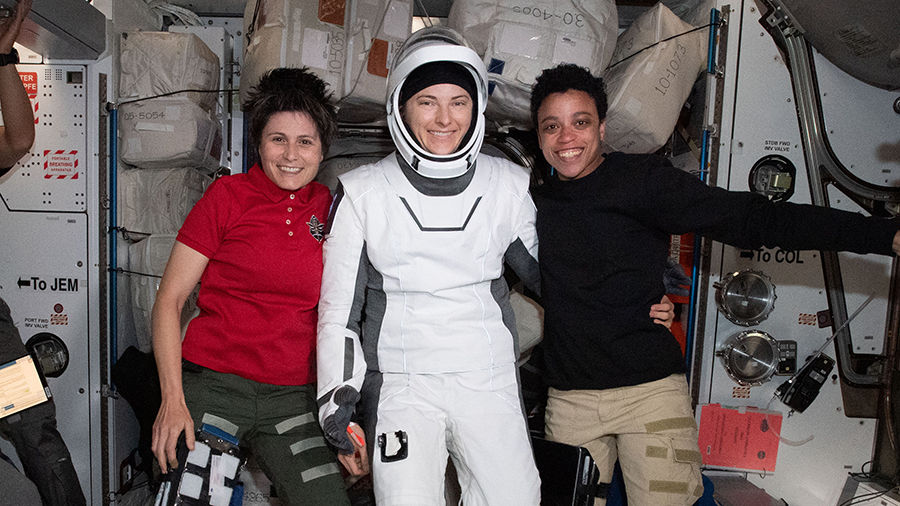
Robotics and human research were the dominant research themes aboard the International Space Station on Monday. The Expedition 67 crew also began the workweek maintaining a variety of exercise equipment and life support gear aboard the orbiting lab.
NASA Flight Engineer Kjell Lindgren turned on the Astrobee robotic free-flyers and let them roam around inside the Kibo laboratory module on Monday. The cube-shaped devices, powered by fans and programmed using algorithms, photographed imagery of Kibo’s racks and systems to demonstrate their ability to autonomously monitor and maintain spacecraft systems. Lindgren also tended to the XROOTS space botany study before tightening gas connections on the Combustion Integrated Rack.
NASA Flight Engineer Jessica Watkins wore the Bio-Monitor’s vest and headband today testing its ability to monitor crew health without interfering with crew activities. Watkins also assisted NASA astronaut Bob Hines who began the six-month maintenance and inspection tasks on the COLBERT treadmill located in the Tranquility module.
ESA (European Space Agency) astronaut Samantha Cristoforetti spent Monday testing the rHEALTH ONE medical device demonstrating its ability to identify cells, microorganisms, and proteins in microgravity. She also shared photographs of the lunar eclipse from the station as it orbited above the Pacific Ocean northeast of New Zealand.
Station Commander Oleg Artemyev joined Flight Engineer Denis Matveev on Monday on ventilation systems and radiation detection tasks in the orbiting lab’s Russian segment. Roscosmos Flight Engineer Sergey Korsakov started his day exploring future planetary piloting techniques before servicing a Russian oxygen generator.
The space station is orbiting higher after the ISS Progress 79 cargo craft fired its engines on Saturday afternoon. The orbital reboost places the station at the correct altitude for Russia’s next cargo craft, the ISS Progress 81, slated to launches on June 3 and docks to the Zvezda service module’s rear port about three-and-a-half hours later.
NASA and Boeing are still proceeding toward the launch of the uncrewed Orbital Flight Test-2 mission at 6:54 p.m. EDT on Thursday. Boeing’s Starliner crew ship is targeted to dock to the Harmony module’s forward port about 24 hours later where it will stay for up to 10 days of cargo and test operations.
Learn more about station activities by following the space station blog, @space_station and @ISS_Research on Twitter, as well as the ISS Facebook and ISS Instagram accounts.
Get weekly video highlights at: http://jscfeatures.jsc.nasa.gov/videoupdate/
Get the latest from NASA delivered every week. Subscribe here: www.nasa.gov/subscribe
